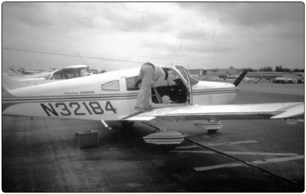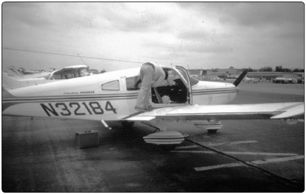
By Jeremy Jankowski
Whether you picked up flying as a weekend hobby, for business travel, or otherwise, chances are youve thought about what it would be like to be a professional captain aboard a jet transport. Yet even if you fly a Skyhawk or a Cherokee, you can make yourself a pro pilot. The key is to approach your flights with the same safety-minded approach as the professionals.
No matter what you fly, the human interface with the machine is often, if not typically, the weak link in the safety net we count on to protect ourselves and our passengers. Although the technology, power and equipment available to jet jockeys certainly helps to improve safety, the biggest gains come from improvements on the human side, and every pilot can implement the attitudes and procedures used by the pros.
1. Human Factors
The first step to making your flight safer is acknowledging the human side of the safety equation as being one of the most important-and directly controllable-aspects of the flight. We do not as pilots generally like to admit that we are fallible and prone to poor decisions, or have limitations and weaknesses affecting our ability to ensure the safe outcome of a flight.But a good pilot absolutely must accept that, as a human, he is prone to all of these things.
This is difficult to reconcile with the typical bravado that accompanies being the Pilot-In-Command. The personality characteristics that motivated us to become pilots in the first place-the sense of control, bravery and confidence-can, if improperly applied, unravel us.
As carriers acknowledged crew involvement in the error chain in a number of accidents, they began making a concerted effort to study how the pilots decision-making is affected by the flight environment, and how he can be effectively trained to make the proper decisions and avoid mistakes in that constantly changing environment. Out of this grew the modern concept of Crew Resource Management, or CRM.
2. CRM
Among the most fundamental principles of this new philosophy is acknowledging that the Pilot-In-Command, while ultimately responsible for the flight, does not operate in a lonely vacuum and should be trained to make the best use of the people and equipment that he is given on a particular flight. Though this may seem more applicable to the professional than the hobbyist, there is an abundance of information available to a GA pilot to help him make informed decisions and take maximum advantage of available resources.
Although you may lack a dedicated copilot, any other people with whom you interface during a flight become a part of the CRM concept. If your spouse is sitting beside you, he or she is a part of the flight deck, and though they may not be able to draw on flight training and hours of experience, they nevertheless have the ability to smell strange odors, see aircraft that you may not see or notice a leak that has missed your attention.
Beyond the flight deck, you can easily tap resources like ATC, Flight Service, other pilots-on the ground or on the radio-mechanics and FBO personnel.
When dealing with CRM, our interface with other people should be focused to allow our decisions to be influenced by the people around us, but not made by others. If we feel that the flight should not go for whatever reason-weather, a mechanical discrepancy or simply a gut feeling-we must be careful to not allow the group mentality to influence our go/no-go decision. CRM is not about allowing other people to make decisions for you, but rather to solicit quality information on which to base your own decisions. The key is to make the people around you comfortable enough to critique the decisions you make or feel compelled to offer relevant information. Your job is to promote open dialogue and encourage people to share their opinions.
Just as specific strategies foster such an environment, being abrasive, condescending or overly critical discourages open dialogue. It is, therefore, a part of your responsibility to maintain control of your emotions and such subtleties as the tone of your voice in order to provide the safest environment possible. This doesnt mean you should not be assertive in certain situations, particularly in expressing what is required of people in an emergency situation. You must, however, make controlled decisions to command action, and not as an emotional tirade.
Patterns in speech also play a part in effective communication. Asking a mechanic, You dont think that this is a problem, do you? is much different than asking, Do you think its a problem? The former puts pressure on the mechanic to agree with you and give you the answer you would apparently like to hear, while the latter gives complete latitude to the mechanic to say exactly what he thinks about the situation. Numerous studies have shown that group behavior is largely molded by a desire for acceptance and approval-hinting at what youd like to hear places subtle pressure on the individual giving you the information. You want an unbiased opinion so you can make an informed decision.
Finally, you must avoid any preconceptions about the people giving you the information, particularly when they are trying to talk you out of something.Our experience should prepare us to make good decisions-other pilots, mechanics, airport personnel and ATC have a wealth of experience to help keep us from making a poor one.
3. Standardize
Not all flights can be carefully scripted, and we learn in training that there are a variety of situations for which there are no checklists. As pilots, we harbor fantasies about saving the day in a critical situation, where our quick thinking and wit allow us to emerge, unscathed, from danger. Its the stuff of hangar legend.
In reality, a majority of the accidents and incidents we might be involved with as pilots dont fit into such a description. Often, it is when we dont do exactly what we do on every other flight (such as putting the gear down or fueling the aircraft) that causes the accident.
If CRM is a central focus of professionalism, standardization is a close second. Although it lacks the luster of the heroic pilot stereotype, safe flying, in the vast majority of cases, comes from consistent execution of good sense procedures.
In GA, this is no different. Every single flight, whether VFR, IFR, cross-country, day or night should have a plan and set of criteria to outline its execution and, if necessary, termination.
4. Exercise Discipline
A key to standardizing, however, is to develop good procedures; blind adherence to a poor procedure will not produce a good outcome. The most obvious, and often abused, good procedure is the disciplined use of a checklist.
The checklists purpose is to ensure that rote procedures are executed properly and consistently. Proper checklist design requires that the checklist be easy to perform, avoids extended distraction during critical phases of flight, and addresses items of a critical nature. It is not meant to be an instruction manual for how to fly the plane, but it should address obvious items that could be destructive or otherwise inhibit safety. It need not, and should not, be long or overly descriptive, particularly in single-pilot aircraft.
Furthermore, framing difficult, subjective decisions with hard-lined limitations can help to ensure that you stay out of trouble. For instance, fatigue rules dictate the rest you must receive before serving as a crewmember, and flights may not be executed at all unless the required visibility is forecast prior to departure and prior to commencing an approach.
Non-commercial operators are allowed-and often become tempted-to take a peek. The FAA, working with industry, has developed the personal minimums checklist, which asks you to make calm, unpressured decisions about what the lowest youll go will be. If you choose to adopt them (see the sidebar above), treat them the same as the airlines do-as absolute, legal minimums that cannot be exceeded.
5. Train
Good decision-making comes from consistent training. Professional flight crews train constantly, despite flying much more frequently than the average GA pilot. Studies show that such training helps cement good instinctual responses to danger and reminds pilots of exactly what to do when something fails or when its time to execute a missed approach. Training also helps to spread new and pertinent information that we are constantly learning-like how to better handle icing and windshear, or use technologies like GPS.
Training comes in a variety of forms. Formal flight instruction is mandated to keep your pilots license current in the form of a flight review, but a periodic flight with a flight instructor to maintain proficiency in non-routine events and to gain new experience helps make you better able to deal with the unexpected. Aviation safety seminars, training magazines, aviation books and videos, online publications and simply spending time discussing safety with experienced pilots all form a part of the process as well.
Conclusion
What defines a professional pilot is not the equipment he flies but the manner in which he flies his equipment, no matter the scope of the operation. Your passengers have every reason to expect and demand the same outcome of their flights with you as they do of the most experienced airline crews. They expect the best. They expect professionalism.
Dont let them down.
Also With This Article
“Ground Operations”
“Driven To Distraction”
“Personal Minimums?”
-Jeremy Jankowski earned the distinction Master Flight Instructor in 2002 and serves as a captain on the Embraer Regional Jet for a Midwestern airline.




